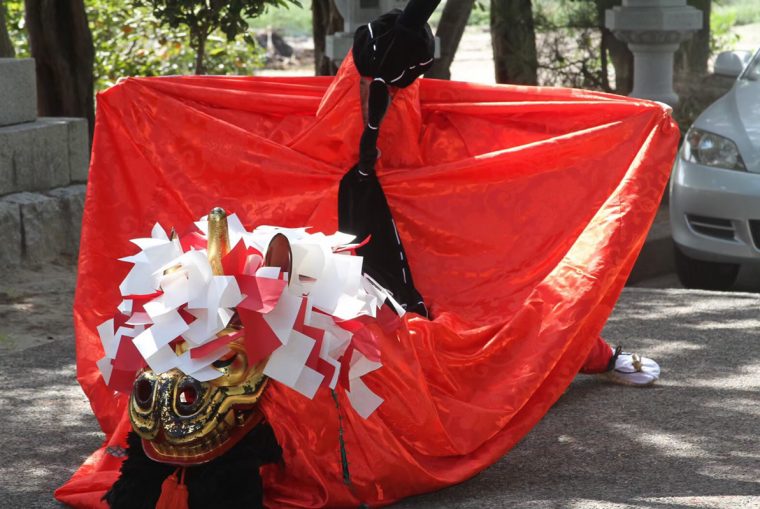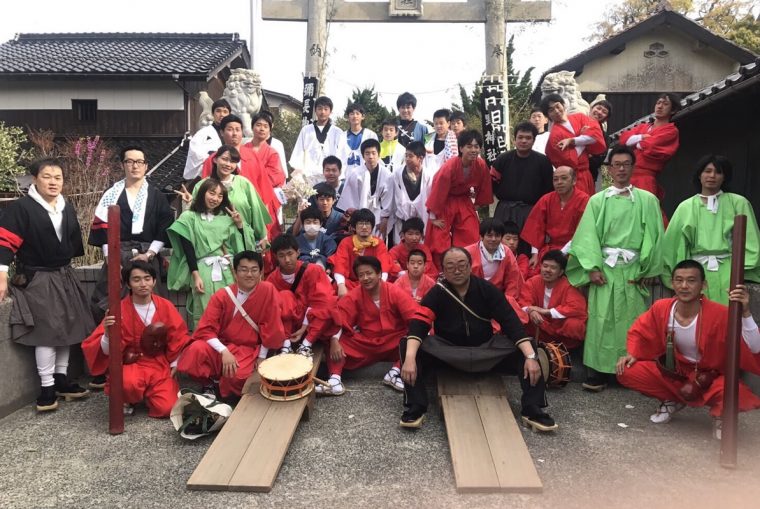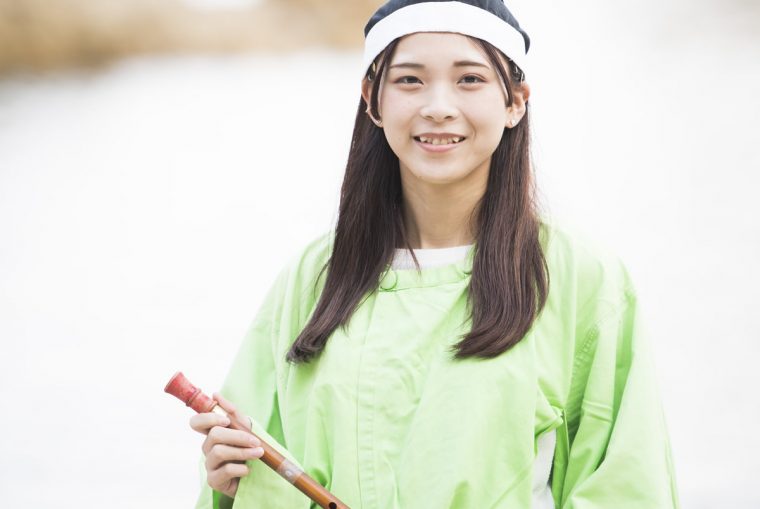Japan Heritage Iwami Town's Kirin Dance-Tottori Prefecture-
In the town of Iwami, home to the rocky coastline of San'in Kaigan Geopark, and the caverns and tunnels along the sandy white beaches of the shimmering Sea of Japan, the Kirin Dance tradition has been passed down, unbroken, for generations.
The Otani Kirin Dance Preservation Association holds their dances at Hino Shrine in the Otani area, where 300 families live and are brought together by the enthusiastic work of the association's forty members.
Mr. Noriyoshi Sawa of the association has said happily: "It's great having a connection to the local community."
The Kirin Dance of Inaba
The Otani Kirin Dance Preservation Association

Festivals at the Hino Shrine are held twice a year in April and September. The autumn one only has the dance at the shrine itself, but the spring one brings the dance to the town on the Saturday eve of the festival. The Kirin dancers go by the homes of the shrine caretakers and local residents, taking up to twelve hours and going into Sunday. Since there are so many homes to visit, the dance used to last late into the night, but now has been divided up into two Kirin to cover more ground in less time. Although this used to be performed by the local youth group, the preservation association has stepped in to keep it going.

There are three types of dances. The "main dance," a 30-minute dance performed as an offering at the shrine; the "middle dance," a fifteen-minute one performed on the eve of the festival; and the "gate dance," performed while visiting the homes. That dance is performed low to the ground, has a fast tempo, and when the Kirin's mouth opens in the middle of it, it really feels like you're going to be eaten up by it. One other unique local characteristic is that, out of more than 100 Kirin, the rare female Kirin here has a round face.

Even though the Kirin Dance has traditionally been performed by men, five years ago the association started accepting women. Expressing her feelings on the situation, Ms. Sawa has said: "With fewer children, this change makes it easier to have more people helping to run things." Still, with everyone from high schoolers to those in their fifties helping out, the association is still going strong.
